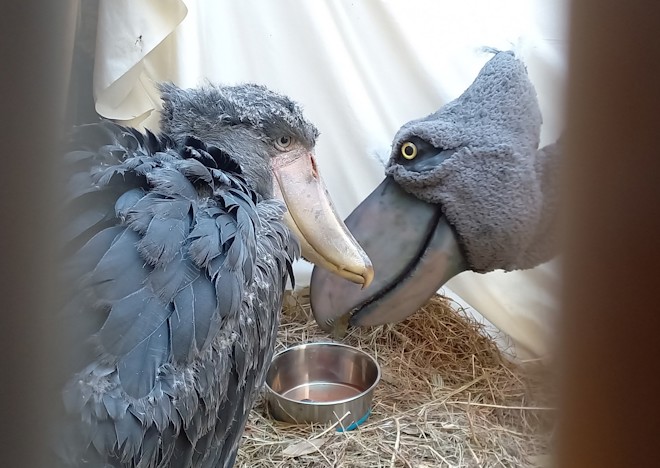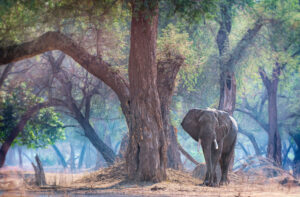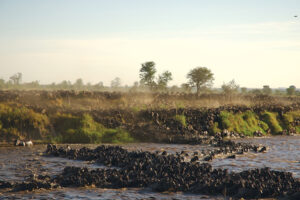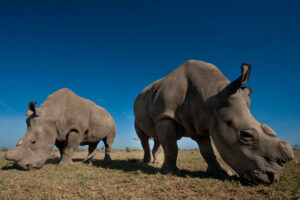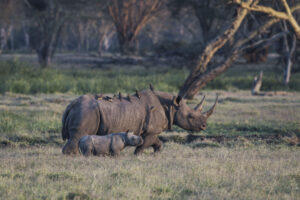
*A version of this article originally appeared in the May 2023 Bush Telegraph newsletter. You can read our recent newsletters and sign-up to receive these in your inbox on our Bush Telegraph newsletter page.
Zambia’s extraordinarily wild Bangweulu Wetlands are a fascinating water wilderness, which expand after the rains to match Botswana’s Okavango Delta in extent. In the local Bemba language, Bangweulu means ‘where the water meets the sky’, and its wide landscape spans lily-strewn water channels, lush floodplains teeming with thousands of endemic black lechwe, and papyrus reedbeds harbouring key breeding sites for one of Africa’s strangest and rarest birds, the aptly named shoebill (Balaeniceps rex).
Officially classified as ‘Vulnerable’ (on the scale of ‘Least Threatened’ to ‘Extinct’) on the IUCN Red List, the global shoebill population is estimated at less than 8,000 birds, with a few hundred individuals living in the Bangweulu Wetlands, their southernmost habitat. Found only in tropical, central-eastern Africa, between South Sudan and Zambia, shoebills do not migrate and are particularly sensitive to habitat disturbance. In Bangweulu, they breed in the papyrus between May and July. As a secretive species fond of seclusion and responsive to disruption at the nest, nest sites are off limits to visitors. However, the birds can still be observed, especially between May and September, as visitors are guided in canoes to watch them hunt for catfish, their favourite local delicacy.
The Conservation NGO African Parks manages the Bangweulu Wetlands Game Management Area in partnership with Zambia’s Department of National Parks and Wildlife, and on behalf of six communities (chiefdoms) who own the land and reserve the right to sustainably use its resources. In 2012, African Parks implemented a Shoebill Nest Protection Programme (SNPP), offering local people a financial incentive if they reported shoebill nests and helped protect them until the birds fledged. Early in the program, the SNPP was implemented alongside researchers using camera traps to monitor the nests and chicks. In 2022, 26 community members were employed to monitor 13 nests around the clock between June and November. The scheme has been successful, producing several fledglings each year.
Shoebills are monogamous and typically lay two eggs, though three eggs have been documented. Usually only the first-hatched chick survives; chicks that hatch later usually die in their first few weeks as a result of parental neglect or ruthless siblicide.
Now, in a first for shoebill conservation, efforts have expanded with the inauguration of the Shoebill Captive Rearing & Rehabilitation Facility in the Bangweulu Wetlands. Programme staff carefully collect the second egg, incubate it at their specialist rearing facility and raise each chick to adolescence before releasing it into the wetlands.
From hand-turning the incubating eggs three times a day, to carefully constructing the chick-rearing rooms with papyrus mats to minimise human contact, every aspect of the project is carefully planned and painstakingly conducted. On emerging from the egg, young shoebills adopt the first living thing they see as their parent – and so the programme uses shoebill hand-puppets in place of their parents, which have been designed and made specially by Emmy award-winning puppeteer, Bill Diamond – one of the creators of the Muppets!
With only two instances previously recorded of shoebills being reared in captivity, this project could have an exceptionally positive impact on shoebill population numbers and scientific knowledge of the species if it proves successful. As of May 2023, five chicks raised in the 2022 season have been tagged with GPS trackers and released. For a rare and sensitive species with declining numbers, this is a ground-breaking project with high hopes of increasing the overall population.
If you’d like to visit this special region and see these fascinating birds close up, Shoebill Island Camp in Bangweulu Wetlands is now being run by a really super team whom we’ve known and worked with for more than 20 years. It offers a greatly enhanced experience and can easily be added as a two- or three-night side-trip from the wildlife spectacular of South Luangwa National Park.
If you’ve been inspired and want to find out more, give us a call or enquire now to speak to an expert.
